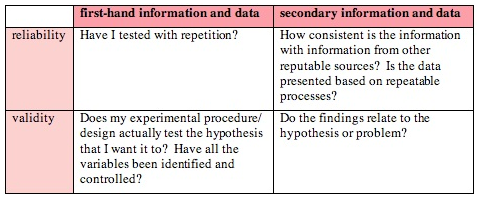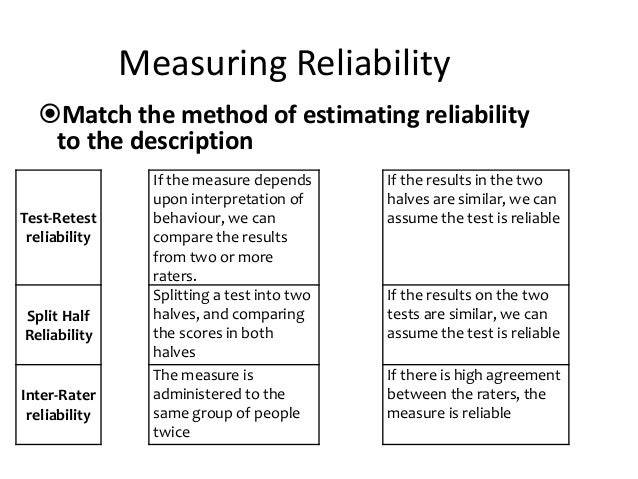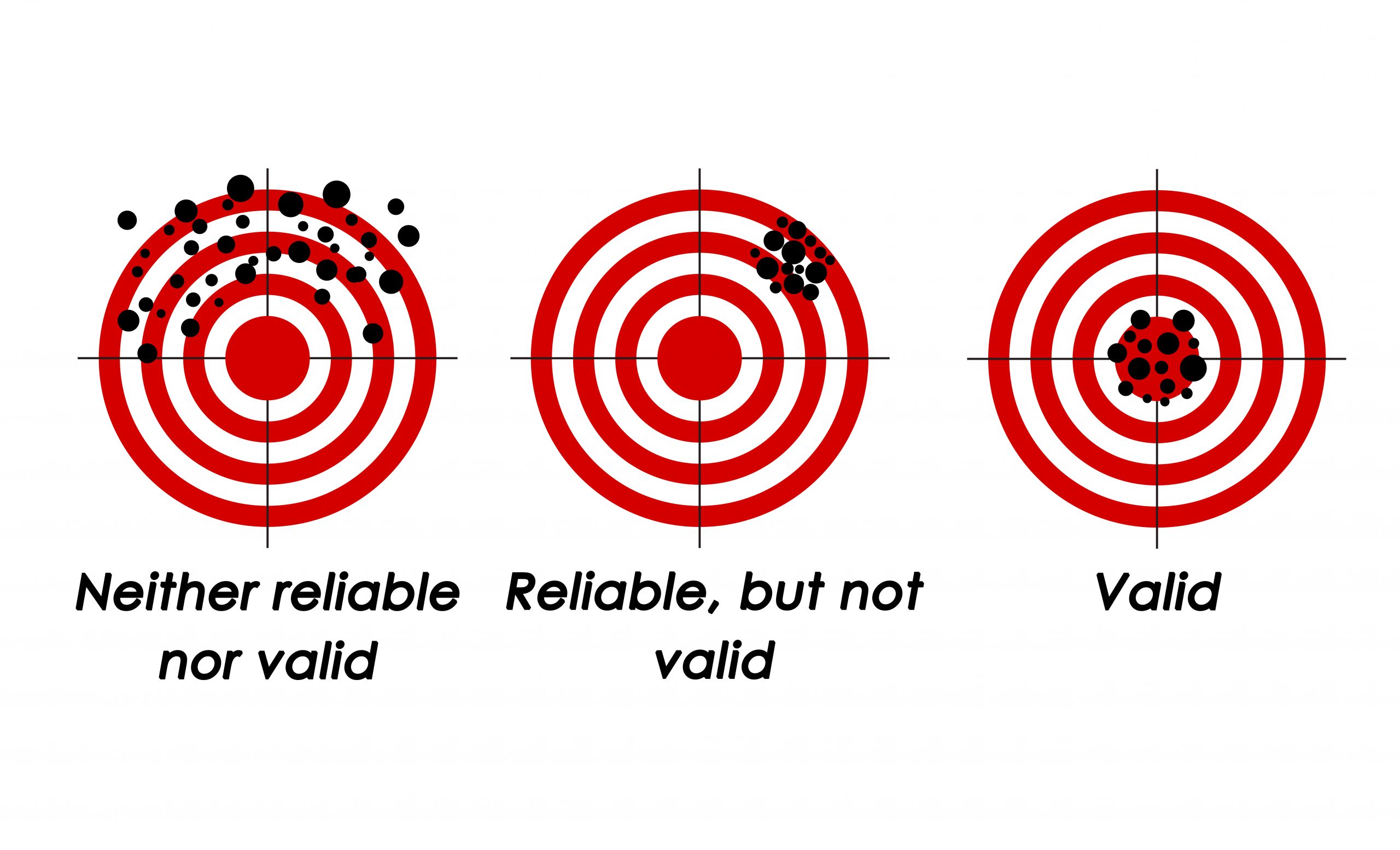

Validity in Research Inter-rater reliability You can measure test-retest reliability by conducting a precise test on the same group of individuals at two different times and calculating the correlation between the two sets of findings.

Therefore the test-retest of the Questionnaire which you have a design for judging the IQ level of the student is less reliable How to measure it But there is great variation in the outcome of the test. The teacher conducts the two tests but at different times on the same group of students. You can utilize it for measuring the stability in outcomes in the case when you perform a similar test on the same sample but at different times.įor example, while preparing a questionnaire for measuring the IQ level of students. This is best used with something that can be expected to stay constant, such as intelligence or personality traits. The test-retest reliability allows for the consistency of results when you repeat a test on your sample at different points in time.

Confidence intervals indicate how likely it is that the population parameter falls within the range, and how wide or narrow the range is.There are four main types of reliability that can be estimated by comparing different sets of results produced by the same method. For example, a 95% confidence interval for the population mean is the sample mean plus or minus 1.96 times the standard error. Confidence intervals are calculated by using the sample statistic, the standard error, and the confidence level.

Confidence intervals are ranges of values that contain the population parameter with a certain level of confidence, such as 95% or 99%. Sampling error occurs because of the natural variation and randomness in the sampling process, and it can be estimated by using the standard error of the sample statistic. Sampling error is the difference between the sample statistic and the population parameter, such as the difference between the sample mean and the population mean. How do you know how accurate and precise your sample data is, and how much it differs from the population data? One way to measure this is by using sampling error and confidence intervals.


 0 kommentar(er)
0 kommentar(er)
